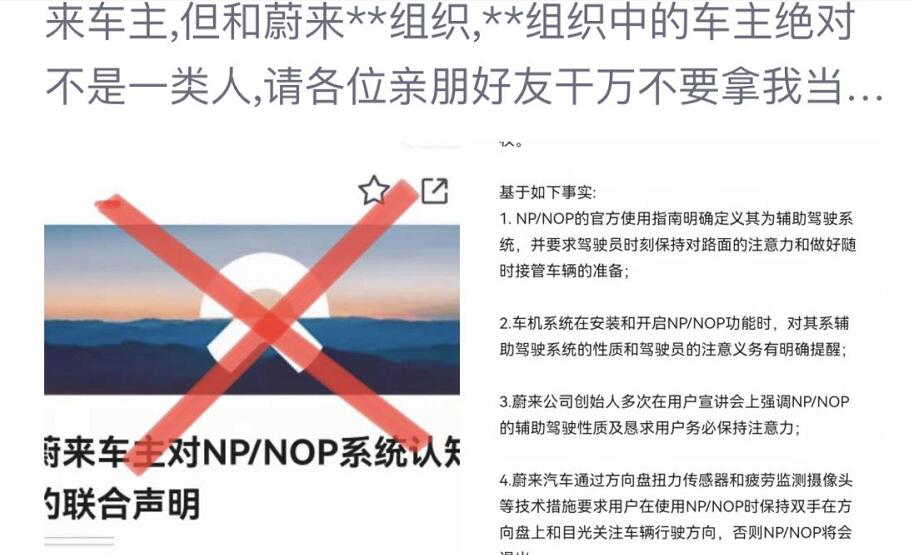
Nio will launch a sub-brand, positioned below the main brand, to focus on the mainstream mass market, the company said during its second-quarter earnings call last week.
Why exactly is Nio making this move? A report released by Pingan Securities on Tuesday may give you the answer.
Here are their main points.
Nio's competitors are accelerating their all-around presence, leaving no segment of the price range untouched.
The scaling effect from the dramatic hardware simplification and data-driven product iterations of smart cars may outpace traditional fuel cars.
Xpeng Motors and Li Auto both recently returned to the Hong Kong stock market to raise funds, with the proceeds to be mainly used for new model development, new technology development, and scale expansion.
Tesla started a price war with its Model Y standard range version released in July, priced at RMB 276,000 (US$42,557) after subsidies, a price that is RMB 72,000 cheaper than the previous version.
The lowest price of Model Y is already lower than all Nio models currently on sale.
Traditional foreign brands are also accelerating their counterattack. Mercedes-Benz has released a comprehensive electrification strategy that will see it launch pure electric models in all market segments by 2022.
Mercedes plans to increase the share of pure electric model sales to 50 percent by 2025 and release 3 pure electric model architecture platforms to prepare for full pure electric by 2030.
Volkswagen Group recently unveiled its 2030 NEW AUTO strategy, which will see it launch a new all-electric electric integration platform (SSP platform).
Volkswagen plans to produce all-electric models based on the SSP platform starting in 2026, covering entry to luxury models.
The company also wants to see sales of its all-electric models account for 50 percent of all model sales by 2030, while it is transforming itself into a software-driven mobility services provider.
China's traditional homegrown brands are also trying to seize the industry's changing opportunities by accelerating their expansion and launching premium all-electric models.
Geely's Zeekr 001 will begin deliveries in the fourth quarter of 2021, and SAIC's IM Motors will deliver its first model, the IM L7, in 2022. Great Wall Motor has also unveiled its 2025 strategy, with a sales target of 4 million vehicles, 80 percent of which will be new energy models.
These traditional car companies have built brands that cover the price range from tens of thousands to hundreds of thousands of RMB.
Their scale effect will become increasingly pronounced, and the speed of product iteration is likely to be rapidly ahead of smaller car companies.
Competitors are accelerating their counterattack, and competition in the new energy vehicle market is intensifying.
With so many new players joining the track, the real war has just begun, leaving a short window for new car makers, including Nio.
Compared with their competitors, the new carmakers are still far from enough in terms of scale and profitability, and their ability to withstand risks is relatively weak.
They must seize the precious window of the next 3~5 years to expand the scale of sales as soon as possible, amplify their advantages and make up for their shortcomings, in order to win the chance of survival.
2021 is a relatively flat year for Nio's development, with no new models launched. According to the data released by Nio, one can find that the growth rate of Nio's sales and revenue is decreasing.
Nio's sales increased only 9.2 percent in the second quarter compared to the first quarter.
As a comparison, Xpeng and Li Auto delivered 17,398 and 17,575 units respectively in the second quarter, and the gap with Nio is narrowing.
Xpeng and Li Auto deliveries grew at a quarterly rate of 30.4 percent and 39.7 percent, respectively, ahead of Nio.
In July 2021, Xpeng and Li Auto deliveries exceeded 8,000 units for the first time, surpassing Nio's 7,931 units.
According to the third quarter guidance given by Nio, Nio deliveries will be in the range of 23,000 to 25,000 units, up 5.0 percent to 14.2 percent from the second quarter.
Although the shortage of core components, including chips, has had an impact on Nio's sales, Nio's growth rate will also be under pressure in 2021.
The RMB 150,000 mass-market accounts for a relatively high proportion of the overall auto market, and if Nio's products cannot enter this market, it will be difficult for it to scale up rapidly.
However, because of the high-end positioning of the Nio brand, a new brand is needed in order to enter the mainstream mass market.



